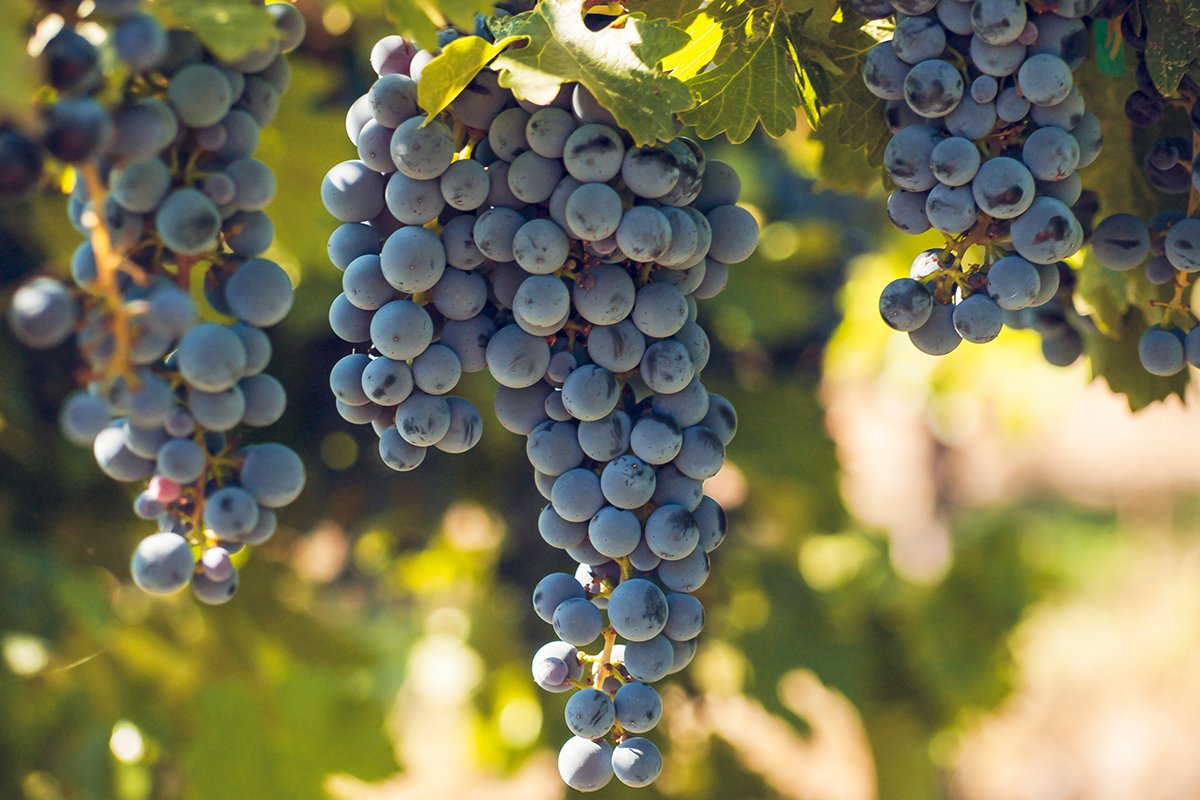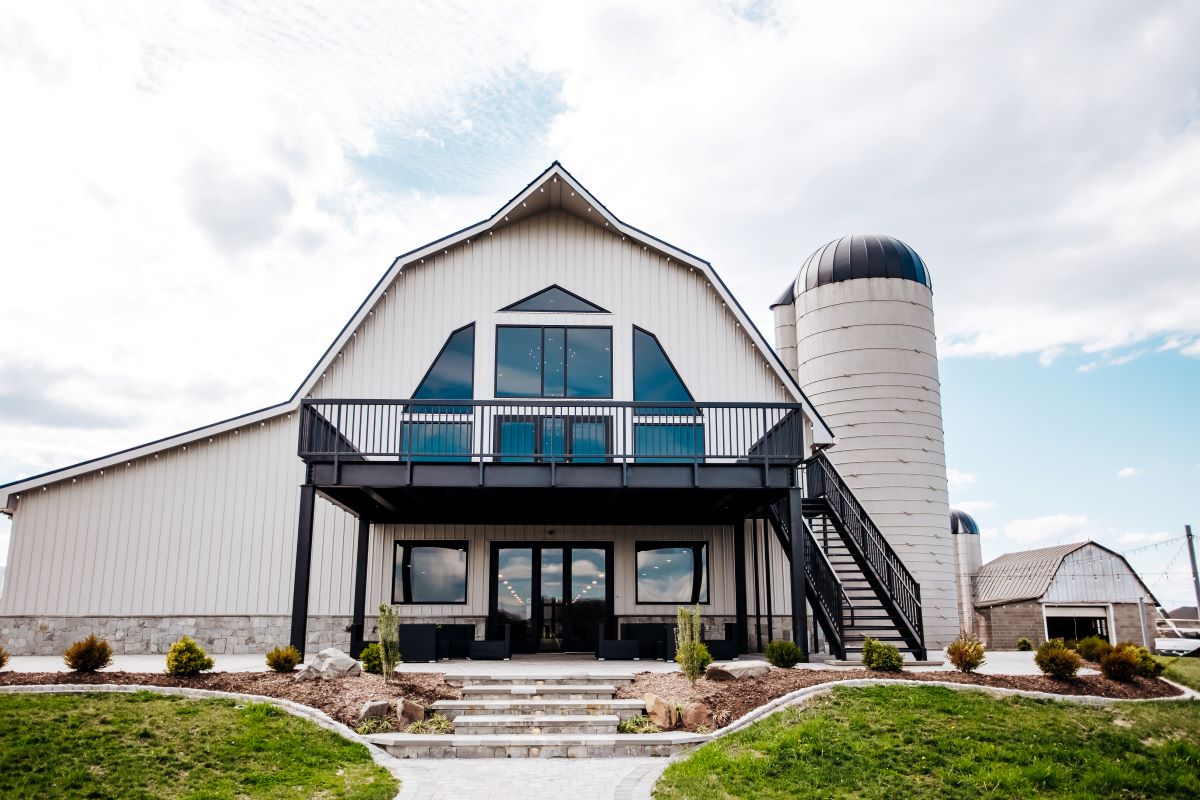
When the 2017 Virginia Governor’s Cup Case winners were announced, representing the top 12 bottles in the state’s top wine competition, something stood out. Five of the top bottles were Petit Verdot chosen from nearly 500 entries from more than 100 wineries. The grape, which since the 1980s had been used by Virginia winemakers primarily for blends or to give bottles deeper color and structure, had seemingly overnight skyrocketed into the straight varietal spotlight.
Less than 500 tons of Petit Verdot was produced during Virginia’s 2016 harvest, according to the most recent commercial grape report, released by Virginia Commonwealth University last summer. Of the state’s 2,562 fruit-bearing acres, Petit Verdot made up 205 acres, or about 8 percent of all grapes grown in Virginia that year. For comparison: Cabernet Franc, the state’s signature red, yielded nearly twice the tonnage off 319 acres under vine. For many years Cab Franc had been touted as the best of Virginia’s reds. But some wine experts would beg to differ.
Petit Verdot can be challenging and expensive to grow. In a state where the growing season is long but the weather is unpredictable, it’s a gamble to lean too hard on fruit with tiny berries that has to hang on the vine until the end of the season to fully ripen (its name means the little green one). Like any grape, many variables could take it down, from hail to raccoons to rot, and since it’s harvested so late, those opportunities grow by the day. Ingleside Vineyards winemaker Mark Misch, whose raspberry and spice-laden 2014 Petit Verdot was also in the 2017 Governor’s Case, was among many in the industry to call the PV growing process “stressful.”
The fruit produces shockingly beautiful juice that’s an inky, purplish red. The nose is lush with dark fruit and the body is flush with a tannic grip. It’s an alluring, cellarable, big bottle in a state where producing consistent Cabernet Sauvignon, king of the American full bodied wines, is hit or miss.
Winemaker Matthieu Finot remembers tasting Petit Verdot when he arrived in Virginia 15 years ago and not being impressed. But it provided some things that other grapes widely grown in the state at the time did not: heavy tannins, great color and racy acidity. After 10 years of making it mostly as a single varietal—the grape remains most commonly used as a blending agent for its color and structure—he still finds it a challenge, especially when compared to Cabernet Franc. But it’s a welcome one: Finot’s 2014 PV from King Family Vineyards also made last year’s Governor’s Case line-up.
“Petit Verdot is a wine where I am in the ring and boxing it the entire time. When Cabernet Franc comes in, it’s easy. [Petit Verdot], even if it has good acid when fermentation is done, the pH can go over the roof. … It takes time to be polished in the barrel,” Finot says.
“I’ve been saying Petit Verdot should be a flagship red for Virginia for about a dozen years,” offers Chris Pearmund, Pearmund Cellars, who has been growing the grape since 2002.
While in other parts of the world the grape ripens too quickly, Pearmund explains that Virginia’s not-too-hot summers allow the fruit to grow more slowly. The small, thick-skinned berries produce less juice, so there are more solid materials involved in the maceration process, creating a richer “soup” as a wine base, but less volume out of the vineyard. At $2,573 average price per ton, PV is the second most expensive grape to grow in the state. When combined with low-yield, high-labor costs and added time in the barrel (new French oak barrel prices top $1,200) the costs per bottle escalate.
As the American wine market has matured, more people are seeking powerful, tannic wines. Petit Verdot draws you in with the eyes and sells with the taste, and at a higher price point than most of its non-blend Virginia peers.
This is good news for winemakers like Maggie Malick, who has won 13 medals nationwide for her Petit Verdot since opening Maggie Malick Wine Caves in Purceville in 2013. Her husband, Mark, oversees the grapes on their property including four acres of the varietal, much of which he sells to other Virginia vineyards.
“We don’t make wimpy ass Petit Verdot. We make big Petit Verdot,” he says proudly of his wife’s work. “We’re trying to make a big red to compete with California Cabernet Sauvignon.”
“Petit Verdot is the next up and coming red,” agrees Casanel Assistant Winemaker/Vineyard Manager Katie DeSouza. She’s been making straight PV since 2010 and her 2015 bottling won a gold medal in the 2018 Governor’s Cup competition. The hardest part, she admits, is being patient and letting it age for 22 months before release.
Winemaker Sebastian Marquet, whose 2015 Petit Verdot won gold for Doukenie Winery this year, manages Petit Verdot plots for wineries in several Virginia counties. He says an increasing number of owners have asked him to make 100-percent bottlings and if he had more grapes available, he’d oblige.
“It’s the new cult grape,” says Bill Travis, the tasting room manager at Doukenie, which this spring planted more vines to keep up with demand. The straight varietal is typically the first wine the winery runs out of each year.
Joy Ting, the supervising winemaker for Michael Shaps Virginia Wineworks in Charlottesville, also makes wine for several vineyards in the state, including Barns at Hamilton Station Vineyards in Loudoun County. The Barns’ 2015 Petit Verdot made the Governor’s Cup case, alongside two other straight Petit Verdot bottlings in 2018.
“People fell in love with Napa Cabs for good reason. Americans really like that big, concentrated flavor,” Ting says. “Petit Verdot offers that in Virginia.”
(May 2018)


